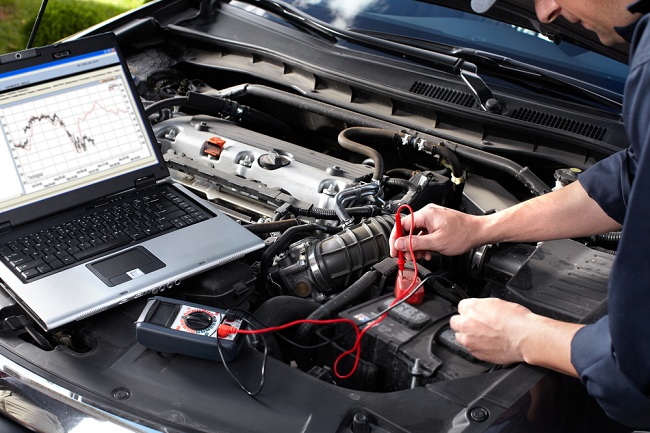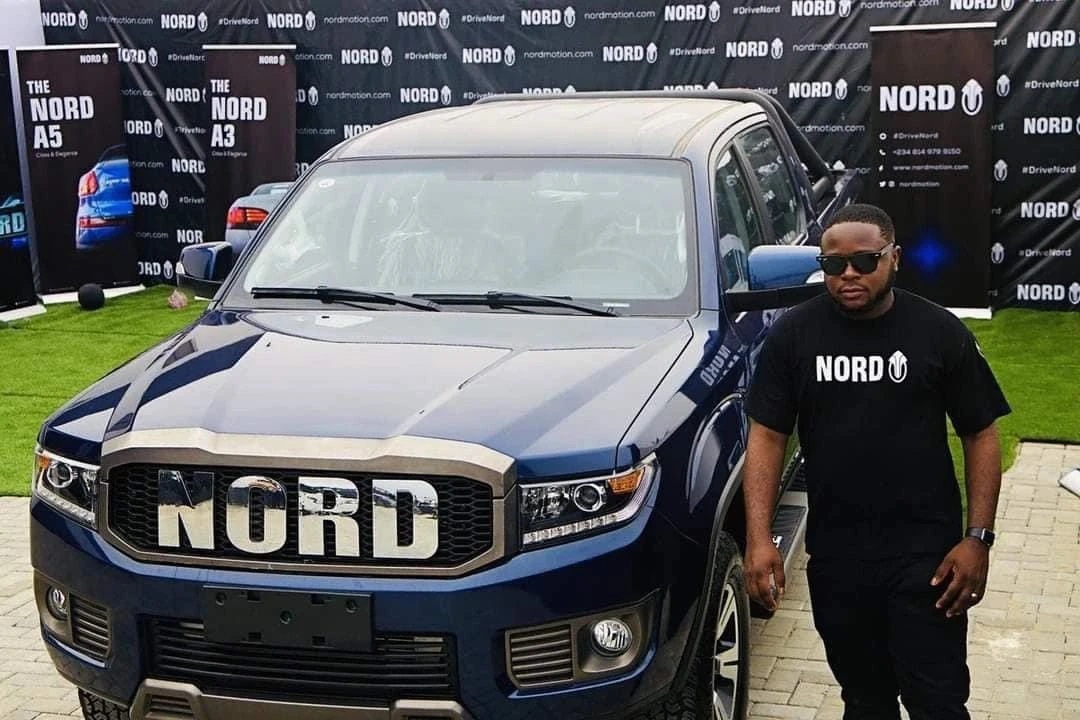Auto
10 Things to Check During Used Car Pre-Purchase Inspection

By Autofactorng
A pre-purchase inspection will help you feel assured about a buying a used car. Check warning lights, fluids, tires, suspension, and brakes in a PPI.
When buying a used car, it is important to get it checked out by a mechanic to make sure everything works correctly. So, it is better to go for used cars in Sacramento which have quality second-hand cars. Make sure the mechanic checks certain crucial systems, including the engine, brakes, and battery.
In addition to these vital components, the mechanic should inspect other parts important to the functioning of a vehicle, such as the dashboard, tires, fluid levels, catalytic converter, and much more.
- Dashboard
The vehicle dashboard contains a variety of readouts allowing you to interact with your vehicle, including the odometer, speedometer, temperature gauge, and warning lights to let you know when something is wrong with your vehicle. All of the gauges should work properly and you should have no warning lights on the dash. If a warning light is lit up, then the mechanic inspecting your vehicle needs to determine the cause in order to give you an estimate on how much it costs to have the vehicle repaired.
- Tires and suspension
The mechanic can check the suspension of the vehicle by pushing down on each corner to see what condition the shocks are in. In addition to the suspension, the tires are another important area that the mechanic should check. When looking at the tires, the mechanic assesses the condition they are in and if they exhibit uneven wear, which can signify an alignment problem.
- Fluids
In order to function properly, a vehicle relies on a selection of fluids to help cool and clean the engine, provide pressure to specific systems, and help keep your windshield clean while driving. When checking the fluids in your vehicle, a mechanic assesses the fluid’s condition, makes sure they are at the proper level, and checks to see if there are any visible leaks.
Engine oil: The engine oil helps cool vital engine parts while in operation and removes dirt and debris, which is filtered through the oil filter.
Synthetic oils also contain detergents that help prevent the buildup of deposits on engine parts.
Engine oil that looks dark or grainy needs changing. In addition, oil that has brown bubbles or looks like chocolate milk may indicator that coolant is leaking into your engine.
Brake fluid: The mechanic should also check the brake fluid to make sure it is at the proper level, there are no visible leaks, and that it is in good condition.
On newer vehicles, the mechanic will check the brake fluid reservoir, which has minimum and maximum lines embedded in the tank. The brake fluid should sit at a level somewhere in between.
Likewise, the brake fluid should have a brown coloration. If the fluid looks dark, then the brake fluid might need changing.
Coolant: The mechanic will also check coolant level and condition.
Antifreeze breaks down over time. As it ages, it works at less colder temperatures until eventually it does not keep the water in your radiator from freezing when it gets too cold.
The mechanic will check the level of the coolant in your radiator at the reservoir.
The mechanic will also check the condition of the fluid to see if there are any indicators that the radiator needs flushing and the coolant needs replacing. Some indicators that a coolant flush is needed include: Colourless or rusty coolant or coolant with materials floating around in it and a sludgy, oily surface, which is a strong indicator of a leaking head gasket.
Power steering fluid: The power steering fluid helps keep pressure built up in the power steering system, making it easier to steer your vehicle.
The mechanic will check the power steering fluid level using a dipstick or by looking at the minimum and maximum lines on the side of the power steering fluid reservoir.
Power steering fluid is a clear, amber, or pink color. If it is brown or black, the power steering fluid might need replacement.
Windshield washer fluid: Additionally, the mechanic will check the windshield washer fluid reservoir to make sure it is at the proper level.
The mechanic will also check the reservoir tank for leaks or cracks at this time. In addition, the mechanic will check to make sure the spray nozzles work properly.
- Brakes
The brakes are a very important system on a car, allowing you to slow down or stop the vehicle safely if needed. In addition to the pads, the mechanic needs to make sure the rotors are in good shape.
Brake pads: The brake pads grip the rotors and stop the vehicle when the brakes are pressed.
Over time, the material on the pads that help it grip the rotors breaks down and wears away. Eventually, you need to replace your brake pads.
Brake rotors: The brake rotors are the surface that the brake pads rub against, helping to stop the vehicle.
The mechanic will check the brake rotors for any scoring, uneven wear, or rust. Sometimes you must get the rotor disc resurfaced, but if the damage is too extensive, you need to replace the brake rotors.
- Engine
The engine is another major component that the mechanic should check. The mechanic is testing to see whether the engine idles smoothly and if there is any knocking or other noises while the engine warms up to operating temperature.
Cooling system: The cooling system includes the radiator, thermostat, and any hoses that route the coolant to the engine.
The mechanic should check the cooling system for any leaks and to make sure that the coolant cycles properly when the engine is running.
The thermostat should open up when the coolant reaches a certain level, allowing cooler coolant in from the radiator to the engine and the warmer coolant to filter into the radiator where the coolant can vent the excess heat via the coils of the radiator.
The mechanic should also check all of the hoses to and from the radiator to the engine to make sure there are no leaks.
Belts: Most cars have a variety of belts, including the belt that runs the alternator, water pump, and other systems.
The mechanic should check any belts for cracks, wear, and stretching.
Some other belts the mechanic will check out include the fan belts, or the compressor belt, which run the air conditioning.
Air filter: The air filter in your vehicle helps keep harmful debris and dirt out of your engine.
The mechanic should check the air filter to see how blocked it is and if it needs replacing.
In addition, make sure the mechanic checks the cabin air filter to determine if it needs replacing. The cabin air filter, usually found behind the glove box if present, filters out dust, pollen, and dirt, keeping it from coming in through the air vents of your vehicle.
Ignition components: The ignition system includes the ignition switch, starter, starter solenoid, alternator, spark plugs, spark plug wires, and battery.
The mechanic should check the battery, alternator, and starter to make sure they are working properly. The mechanic can also check the battery’s charge to ensure that it’s not low.
In addition, the mechanic should check out the distributor cap and rotor if your vehicle is old enough to have a distributor.
Engine oil leaks: When looking over the engine, the mechanic can check for any oil leaks.
Leaks are usually the result of a bad gasket or seal. The mechanic can tell where the leak is coming from usually by its location on the engine or surrounding components.
- Transmission
The mechanic should check the transmission to assess smooth shifting with no delay when going into gear. If the vehicle has a manual transmission, it should shift without grinding.
In addition to making sure the transmission operates smoothly and goes into gear like it should, the mechanic should look for leaks underneath the vehicle. Transmission fluid is red in coloration and usually drips on the ground beneath the engine if there is a leak.
- Exhaust
A vehicle’s exhaust system helps move the fumes from the combustion chamber out of the engine and away from the vehicle. The exhaust pipe exits at the rear of the vehicle, limiting the exposure of the driver and passengers to carbon monoxide fumes, which are deadly if too much is inhaled.
Exhaust manifold: The exhaust from the combustion chambers is routed through the exhaust manifold and makes its way through the vehicle’s exhaust pipes and out of the back of the tail pipe.
If you smell an exhaust smell within the cabin of the vehicle, chances are the vehicle exhaust system has a leak and needs repair.
Catalytic converter: The catalytic converter scrubs the outgoing exhaust of pollutants before releasing them.
A faulty catalytic converter can lead to a loss of power while driving a vehicle. More than likely this can also cause the vehicle to fail an emissions test.
Muffler: The muffler helps reduce the noise produced by a vehicle’s exhaust system.
A faulty muffler can let deadly carbon monoxide fumes into the vehicle’s interior. Prolonged exposure to carbon monoxide can lead to unconsciousness and death.
A damaged muffler can also cause the vehicle engine to overheat or even lose power.
Tailpipe: The tailpipe is where the exhaust exits the vehicle and can give you a clue as to the condition of your exhaust system according to the smell that issues out of it.
If the exhaust smells like rotten eggs, then the catalytic converter might have become blocked or is in the process of failing.
The strong smell of exhaust could lie in an exhaust leak somewhere in the system, including the exhaust pipe, muffler, or tailpipe.
If you detect a gas smell coming from your exhaust, then the air to fuel mixture entering into the combustion chamber is probably off.
- Body of the vehicle
Another area a mechanic needs to look at when inspecting a vehicle you want to buy is the car’s body. While minor scrapes and dents are easily fixed by a professional auto body specialist, more significant damage might mean the car was in a more extensive accident. This in turn could lead to the vehicle being out of alignment, which can cause uneven tire wear.
Dents and rust: The mechanic should look for rust and dents on the car body, especially in areas that you cannot see, such as underneath or in the wheel wells.
Dents and rust themselves are not a cause for alarm if minor enough.
If the rust damage is extensive enough, then you should consider looking for a different vehicle.
- Vehicle lights
The lights in the vehicle also need to operate properly. Correctly working headlights give you good visibility in dark and inclement conditions, while brake lights and turn signals let other drivers know your intent on the road.
Headlights: When inspecting the vehicle’s headlights, the mechanic should make sure that both high and low beams work correctly.
The headlights are a required part for legal and safe vehicle operation.
While easily replaced, blown headlights could signify more complex problems with a vehicle.
Brake lights: The brake lights on a vehicle must work properly in order for other vehicles to be able to see your stopping in low-light or dark conditions.
Driving a vehicle with non-working brake lights is considered a moving violation and could lead to a ticket from the police.
Turn signals: Turn signals make drivers aware of your intent to turn left or right.
When having the turn signals checked, make sure the mechanic looks at both the front and rear turn signals.
Hazard lights: Hazard lights alert others to problems with your vehicle.
Hazard lights are helpful when you have broken down on the side of the road to alert other drivers to your vehicle’s presence.
- HVAC
The HVAC system in your vehicle is important for controlling the environment within the passenger cabin. Make sure the heat and air conditioning within any vehicle you want to buy works properly. This keeps you from having to suffer through extreme cold or heat and can make your driving experience more enjoyable.
Air conditioning: The air conditioner should blow fresh, cold air while on.
Failure to cool the air could mean the air conditioning compressor needs refrigerant or that you have a broken belt.
Heater: In addition to the air conditioning, also check out the heater in any car you are thinking of buying to make sure it also works properly.
Turn the heater on and allow it to heat up. Most often the vehicle engine needs to warm sufficiently before the heater can begin blowing out warm air.
See if you can detect any bad smells coming from the vent when using the heater or the air conditioner, especially mildew. More than likely if you smell mildew, it means the vehicle has mildew growing inside the AC evaporator.
Buying a new vehicle is stressful enough without having to worry about buying a vehicle with problems. You should inspect any used car before you buy it. If you do not feel confident enough to perform the task yourself, you can always have one of our expert mechanics perform a pre-purchase car inspection for you.
Auto
inDrive Backs Smart Mobility Innovation With AOT Lagos 7.0 Sponsorship

By Modupe Gbadeyanka
The 2025 edition of the Art of Technology (AOT) Lagos is going to be bigger and better with the inclusion of inDrive as its official sponsor.
The AOT Lagos 7.0, themed Future Technologies and a Sustainable Lagos, is scheduled for Thursday, December 4, 2025, at the Landmark Centre, Lagos.
inDrive, a leading global ride-hailing platform operating in nine African countries, is partnering with the Lagos State government to bring together policymakers, innovators, tech founders, investors, and global industry leaders to shape the future of technology and digital transformation in Lagos.
Through this collaboration, inDrive aims to contribute to high-level conversations on driver empowerment, sustainable transport models, safety, and affordability, key challenges affecting millions of daily commuters and mobility service providers in the state.
According to the Country Representative of inDrive Nigeria, Mr Timothy Oladimeji, the sponsorship underscores the company’s deep commitment to advancing equitable mobility systems and supporting conversations that drive long-term impact across the transportation ecosystem.
He noted that inDrive sees AOT Lagos as a critical platform for addressing mobility challenges and accelerating innovation within the state.
During the event, inDrive will be participating in one of the key sessions, discussing the topic From fuel to future: the rise of e-mobility in Lagos.
Aside from this, inDrive will also be hosting a side workshop themed The Market Share Victory – How inDrive Became Nigeria’s Second-Largest Ride-Hailing Player.
“We are proud to sponsor AOT Lagos 7.0 because it aligns perfectly with our vision to democratise mobility and ensure fairness for both drivers and riders.
“As Lagos moves toward a smarter, more sustainable mobility future, inDrive is committed to supporting solutions that prioritise affordability, safety, driver empowerment, and technological readiness.
“Through this partnership, we hope to contribute meaningfully to shaping policies and ideas that will redefine how millions of people move across the state,” he said.
Now in its seventh edition, AOT Lagos has evolved into a premier platform for advancing smart-city innovation, showcasing emerging technologies, and influencing the policy frameworks that shape the digital economy in Africa’s largest city.
Auto
FG to Open Section of Lagos-Calabar Coastal Highway December 12

By Adedapo Adesanya
The federal government is set to open Section 1 of the 700 km Lagos-Calabar Coastal Highway for public use from December 12 to 17, 2025.
The Minister of Works, Mr Dave Umahi, gave the assurance on Sunday in Lagos during a review of outstanding works on Section 1 of the highway project.
The section 1 is 47.47km long and has six lanes and two carriageways.
Mr Umahi said: “We also set aside April next year to have Section 1 and half of Section 2 fully completed and commissioned,” adding that the contractor handling the project, Hitech Construction Company Limited, had achieved more than 80 per cent of the reinforced concrete pavement.
“We are very grateful to God Almighty for his mercies, and to the President and to the contractor.
“If we are to pay for everything they have done, it will be very difficult to have this job done because there are places we didn’t envisage that we were going to be removing pits up to a depth of 20 metres.
“They had to do that because they are partners in progress for the development of the country.
“We have just about three kilometres to complete the entire sand filling from Ahmadu Bello Way to Eleko Junction, and we are excited at the work and the quality of what has been done,” the former Governor of Ebonyi State, said.
The new Controller of Works in Lagos, Mr Olufemi Dare, told the minister that a lot of settling was ongoing at Chainage 33 of the highway project, praising the contractor for high quality of work.
“Sir, it may interest you to know that the building standing is the palace of this community, and you saved this building, and they are extremely happy,” he said.
On his part, the Managing Director of Hitech Construction Company Limited, Mr Dany Abboud, said that the company would still backfill from Chainage 34 to Chainage 37.
“Dredging is ongoing, we are on track to deliver.
“We are monitoring the settlement in the swampy areas and the water body areas due to the change of alignment,” he said.
The highway, which commenced construction in March 2024, has generated a lot of controversy, with critics raising concern around cost and procurement structure.
Auto
Nord Vehicle Owner Accuses Nigerian Bank of Economic Sabotage

By Modupe Gbadeyanka
A Nigerian lender has been accused of frustrating local business owners by not financing Made-in-Nigeria vehicles but promoting the purchase of foreign vehicles.
This allegation was made by the owner of a local vehicle assembly firm, Nord Motion, Mr Oluwatobi Ajayi, in a post on X, formerly known as Twitter.
He described this as an economic sabotage, stressing that this action does not encourage local investors.
“A business owner in the oil and gas sector approached us that he would like to buy two units of the @nordmotion Max pickup for his company. Apparently, he was impressed with the vehicle after some rides with his peers in the sector.
“To my shock, yesterday, my team told me that the bank, a bank operating in Nigeria told him that they do not finance Made-in-Nigeria vehicles, and they even suggested to our customer that he should go for foreign brands instead.
“The most provocative part of this is that all of the brands they suggested to him identified as Made-in-Nigeria brands in their filings with the Bureau of Public Procurement (BPP), which means they decide who they want to be whenever it suits them.
“This is yet another example of the needless sabotage and institutional bias against Nigerian manufacturers and assemblers that we experience in this sector.
“The President aims to grow us into a $1 trillion economy. Nigerians want to buy Made-in-Nigeria products, we are working very hard to produce world-class vehicles, but some banks, who should play the role of credit facilitators, are displaying open prejudice against locally made vehicles.
“What sort of economic sabotage is this?
“Many of us who continue to assemble and manufacture vehicles here do so not just for profit, but out of patriotism and belief in the long game. We see this as a marathon, not a sprint.
“We cannot continue using Nigerian resources to strengthen foreign factories while starving our own indigenous companies of opportunities.
“If we truly want this country to be better, then we must support goods and services made in Nigeria, especially those of us who have shown we can deliver world-class standards. The support has to be real, not just in words, but in policy, in finance, and in action.
“Every time we deny support for local production, we export jobs, skills, and economic growth that should belong here,” he narrated.
-

 Feature/OPED6 years ago
Feature/OPED6 years agoDavos was Different this year
-
Travel/Tourism9 years ago
Lagos Seals Western Lodge Hotel In Ikorodu
-

 Showbiz3 years ago
Showbiz3 years agoEstranged Lover Releases Videos of Empress Njamah Bathing
-

 Banking7 years ago
Banking7 years agoSort Codes of GTBank Branches in Nigeria
-

 Economy2 years ago
Economy2 years agoSubsidy Removal: CNG at N130 Per Litre Cheaper Than Petrol—IPMAN
-

 Banking3 years ago
Banking3 years agoFirst Bank Announces Planned Downtime
-

 Banking3 years ago
Banking3 years agoSort Codes of UBA Branches in Nigeria
-

 Sports3 years ago
Sports3 years agoHighest Paid Nigerian Footballer – How Much Do Nigerian Footballers Earn













